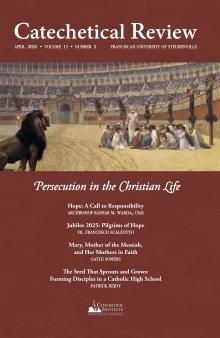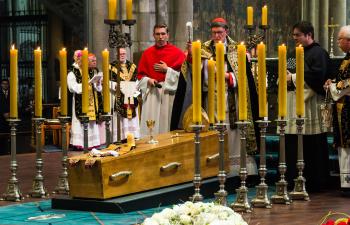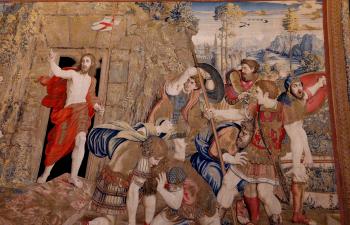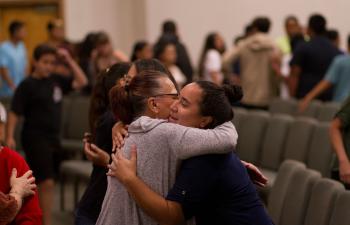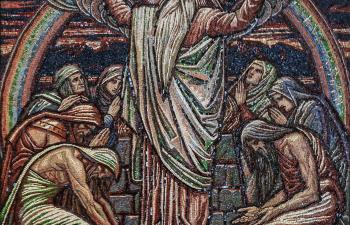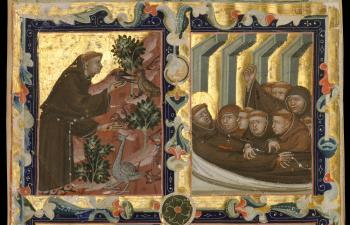 It goes without saying that Christianity has faced various kinds and levels of hostility throughout history from governments and societies. Christians have often been forced to choose between moral or religious values and civic or cultural values. Material goods, reputations, jobs, freedom, and even lives have been at stake—and are today in many places. One major milestone in the conflict between Christianity and the state came in the year 249, when the Roman emperor Decius issued an empire-wide decree ordering all citizens to participate in pagan sacrifices. The exact nature of the sacrifice varied from place to place, but it typically involved an incense offering, a libation (or offering of wine), and eating some sacrificial meat. This is unique in the history of the Roman state religion to that point, as performance of actual religious rituals had almost never been prescribed by law for the average citizen.
It goes without saying that Christianity has faced various kinds and levels of hostility throughout history from governments and societies. Christians have often been forced to choose between moral or religious values and civic or cultural values. Material goods, reputations, jobs, freedom, and even lives have been at stake—and are today in many places. One major milestone in the conflict between Christianity and the state came in the year 249, when the Roman emperor Decius issued an empire-wide decree ordering all citizens to participate in pagan sacrifices. The exact nature of the sacrifice varied from place to place, but it typically involved an incense offering, a libation (or offering of wine), and eating some sacrificial meat. This is unique in the history of the Roman state religion to that point, as performance of actual religious rituals had almost never been prescribed by law for the average citizen.
The Decian Persecution
Though we do not have the text of Decius’ decree, we know quite a bit about its enforcement from several sources. Most notable among these are the writings of St. Cyprian, who was bishop of Carthage (in modern-day Tunisia) from 249 until his martyrdom during the persecution of Valerian in 258. As bishop of the second-most prominent city in the western half of the Roman empire, Cyprian was on the forefront of Christian reactions to the decree to sacrifice. It is largely through his letters and treatises, especially On the Lapsed, that we learn three things. First, we learn what was asked of Christians (and, in fact, all citizens) during the enforcement of Decius’ decree. Second, we learn how Carthaginian Christians reacted to the decree. Finally, we learn how the Church, especially the hierarchy, viewed the differing Christian responses. These facts can give modern-day Christians, who face all kinds of hostility and persecution, insight into how the early Church understood the Christian responsibility under duress and whether there was any flexibility in acceptable responses.
What we ultimately need to understand is how Christians, then and now, react to pressures from governments and societies. So I will focus first on Christian reactions to the decree and how these reactions were viewed by Church leaders. We can break down Christian reactions to the decree into two categories. First were those who were called on to sacrifice but completely and publicly resisted to the point of suffering. Some were put in jail, had their property confiscated, or underwent torture; some were ultimately put to death. In their suffering, they were called “confessors” (because they confessed, or proclaimed, Christ publicly) and in their deaths, “martyrs.”
The second category includes those who came to be known as the “lapsi”—the lapsed or fallen. In this category, there were two types: There were those who, when called upon to sacrifice, did just that. After the end of the persecution, St. Cyprian described these in On the Lapsed as, shall we say, eager. He wrote: “Without any compulsion they hastened to the forum, they hurried of themselves to their death, as if this was what they had long been waiting for, as if they were embracing the opportunity to realize the object of their desires.”[1] He is writing here, of course, not about the physical death of the martyrs but the spiritual death of those called the sacrificati, or the sacrificers.
However, there is another group that came to be called the libellatici, “those who have little books.” Because the Romans did not have a central database of those who had followed the edict, they tracked participation by issuing libelli, or little books, to those who had sacrificed. We still have today around 40 of these libelli, mostly from Egypt. These show that they functioned as certificates of sacrifice, signed not only by the sacrificer but by the local commission in charge of enforcing the decree, as well as, in some cases, a professional scribe or another person who held power of attorney for the sacrificer. Once you had sacrificed, if an official demanded to know whether you were in good legal standing, you could show your libellus to prove that you were. Evidence suggests that perhaps two copies were made of each libellus, one being kept by the petitioner and one deposited in the local archives.
The rest of this online article is available for current Guild members.
[1] Cyprian of Carthage, "The Lapsed," in The Lapsed, The Unity of the Catholic Church, Ancient Christian Writers 25, trans. Maurice Bévenot (Newman Press, 1957), § 8.
[2] Cyprian, The Lapsed, § 27.
[3] John R. Knipfing, “The Libelli of the Decian Persecution,” Harvard Theological Review 16, no. 4 (1923): 345–90, libellus 21.
[4] Cyprian, The Lapsed, § 5.
Art Credit: Hosios Loukas Monastery, St. Mercurios Martyr Mosaic, Wikimedia Commons.
This article is from The Catechetical Review (Online Edition ISSN 2379-6324) and may be copied for catechetical purposes only. It may not be reprinted in another published work without the permission of The Catechetical Review by contacting [email protected]


